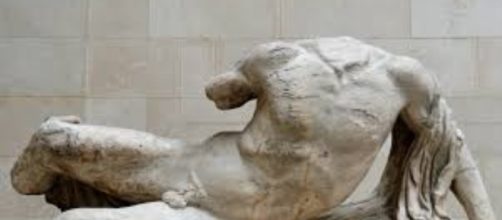It’s a given that the English are big on tradition. Their culture is long defined by things like the changing of the palace guard and afternoon tea. So no one would confuse the British Empire with, say, the Athenian Empire. And while the Brits can claim Buckingham Palace as theirs, the Parthenon temple in Greece is not part of their birthright. One has to wonder, then, why The British Museum thinks it’s entitled to keep the 253 marble sculptures that the 7th Earl of Elgin, Thomas Bruce, took from that temple in 1801 and now offers others - including the rightful owners – to borrow.
Sharing another nation's wealth
Invitations went out to Africa and China to take the marbles on loan, but there were no takers. Only Russia’s State Hermitage Museum cadged one of them - the river god Ilissos. Sending it there marked the first time any of this temple art left England since Lord Elgin sold them to the Museum in 1807. The idea man for the loans, Neil MacGregor when directing the British Museum, told the press that the right question to ask isn’t why England is holding on to something belonging to Greece. “The real question is how the Greek and British governments can work together so that the sculptures can be seen in China and Africa.” Can you believe this guy? The word hubris comes to mind, ironically derived from the Greek meaning overconfident.
Stolen goods, anyone?
Is it any wonder that no one wants to take up the offer? Everyone seems to know better except the Brits, and the Russians, of course. Why doesn’t the British Museum return these works? Even efforts to retrieve art that the Nazis stole from Jewish collectors have had some success. If Germany and Austria can do the right thing, what’s England’s excuse? Insensitivity to Greece's history is surprising for a country that pays so much homage to tradition. Or is only merry old England’s own history that warrants respect?
Who's minding the store?
Lord Elgin’s excuse - that the Greeks didn’t take care of their art- is no longer true, if it ever was. Records shows that when the Turks invaded Athens at the start of the 19th century, they sought to liquefy the temple’s lead clamps for bullets until the Greek soldiers sent their own ammunition to prevent the mutilation.
Besides, it’s not like the English have taken proper care of the marbles. Temple art expert William St. Clair told the London Observer in 1999 of museum records that noted damages to the marble from air pollution as a result of improper ventilation.
Time to storm the palace gates
Wait, there's more. A cleaning of the marbles with metal scrapers made it necessary to mask the damage with veneers of wax. The Greeks have a better chance at caring for their art having built a $200 million state-of-the-art museum meant to hold the ancient treasure at the foot of the Acropolis. It’s a wonder the Greeks haven’t sent troops to London to liberate what is theirs.


